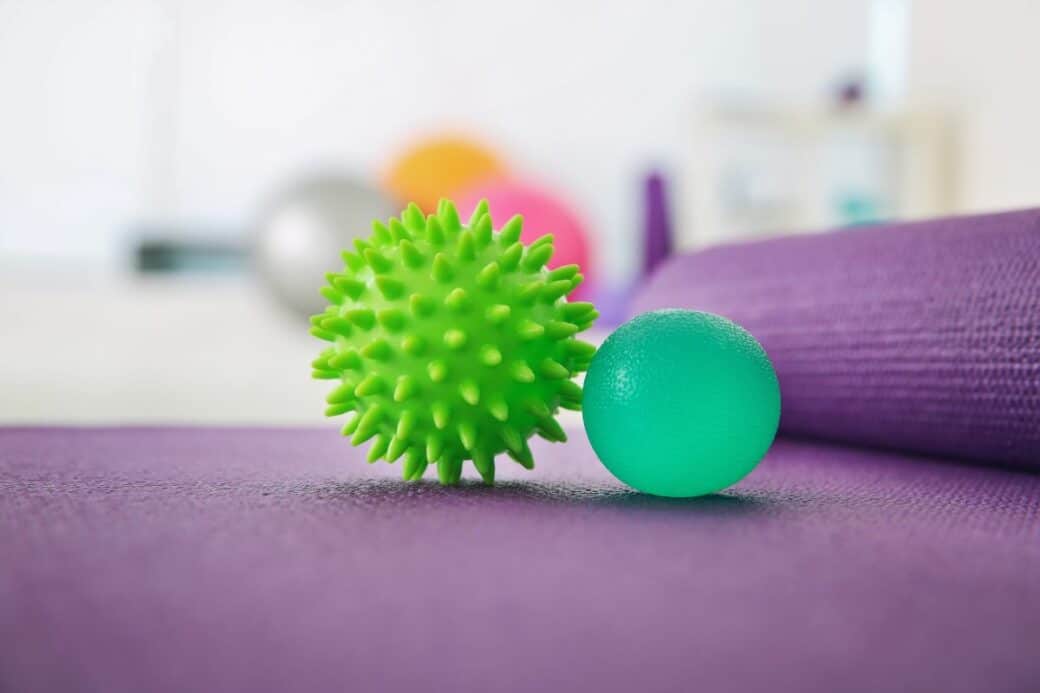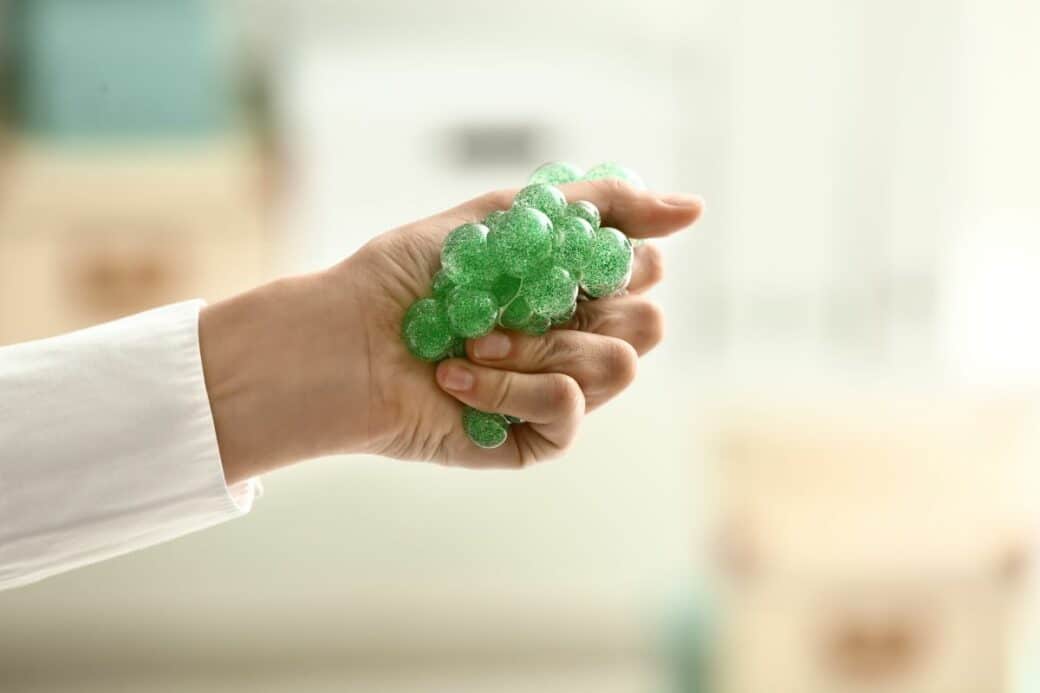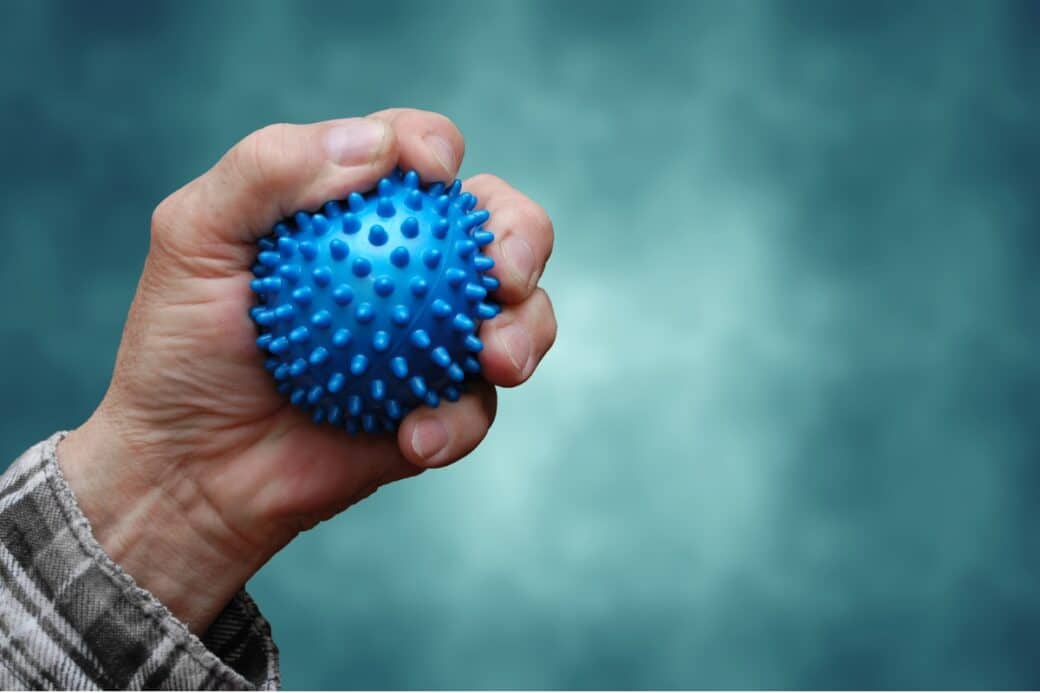You’ve likely encountered stress balls at some point, those squishy little objects people squeeze in their hands during moments of tension. But have you ever wondered why they exist and what they actually mean? In this article, we’ll unravel the mystery behind stress balls, exploring their purpose, benefits, and the science behind their stress-relieving properties. Prepare to discover the hidden meaning behind these seemingly simple objects and gain a newfound perspective on how they can help alleviate everyday stress.

Stress Balls Meaning: The History of Stress Balls
Origins and Original Purposes
Stress balls have a surprisingly long history that dates back to ancient times. The ancient Greeks, for example, used to make stress balls out of animal bladders filled with sand or grain. They believed that squeezing these balls could help relieve tension and promote relaxation. Similarly, the Chinese and Japanese cultures used stress balls made of silk and filled with herbs as a form of therapy to improve circulation and reduce stress. These early stress balls were not only practical tools but also served as symbols of healing and well-being.
Evolution and Modifications Over Time
As time went on, stress balls evolved and adapted to suit different needs and preferences. In the 1980s, stress balls made from foam became increasingly popular due to their softness and ease of use. This foam material allowed for a more comfortable grip and offered a gentle resistance when squeezed. In the 1990s, gel-filled stress balls emerged, providing a unique squishy sensation that many found soothing. More recently, stress balls with electronic components, such as vibration or temperature control, have entered the market, offering a modern twist to this age-old stress-relief tool. Additionally, fabric stress balls have gained popularity for their versatility and customizable designs.
Cultural Impact and Significance
Stress balls have transcended cultural boundaries and have become a global symbol of stress relief and relaxation. Beyond their practical use, stress balls have also become a popular promotional item, showcasing logos and brands. This cultural impact has made stress balls a recognizable and familiar object in offices, homes, schools, and even healthcare settings. Their significance lies not only in their ability to alleviate stress but also in their ability to bring people together, as they are often shared and passed around as a simple act of goodwill.
Types of Stress Balls

Foam Stress Balls
Foam stress balls are perhaps the most common and widely recognized type of stress ball. Made from soft and squishy foam, these stress balls are perfect for repetitive squeezing and are gentle on the hands. The foam material also allows for a wide range of customization options, making it easy to create stress balls of various shapes, sizes, and colors.
Gel-Filled Stress Balls
Gel-filled stress balls offer a unique tactile experience. Filled with a jelly-like substance, these stress balls provide a satisfying squeeze that can help relieve tension. The gel filling also adds a dimension of resistance that some individuals find particularly enjoyable. These stress balls come in different textures and densities, offering a range of options based on personal preferences.
Electronics-Containing Stress Balls
In recent years, stress balls with electronic components have gained popularity. These high-tech stress balls often contain features such as vibration, heat, or even aromatherapy to provide an enhanced sensory experience. The electronic components can add an additional layer of relaxation and promote a deeper sense of well-being for those seeking a more advanced stress-relief tool.
Fabric Stress Balls
Fabric stress balls offer a different tactile experience compared to foam or gel-filled stress balls. Usually filled with sand or small beads, these stress balls are covered in soft fabric, providing a comfortable and cozy feel. The fabric’s texture can add an additional tactile sensation, making these stress balls ideal for those who prefer a gentle touch and a more tactile approach to stress relief.
Physiological Effects of Stress Balls
Muscular Benefits
One of the primary physiological benefits of using stress balls is the impact they have on the muscles. Squeezing a stress ball engages the muscles in the hands, fingers, and forearm, promoting blood circulation and muscle relaxation. This can help relieve tension built up in these areas and reduce muscle fatigue. Regular use of stress balls can strengthen the hand and forearm muscles, providing improved grip strength and dexterity.
Neurological Impacts
Engaging with a stress ball can stimulate the nerves in the hands and fingers. The sensory feedback from squeezing and manipulating the stress ball can activate the proprioceptive system, which helps individuals perceive and control their body’s position and movement. This activation can improve coordination and fine motor skills over time.
Effects on Stress Hormones
Squeezing a stress ball can have a calming effect on the body’s stress response. When we experience stress, our bodies release stress hormones such as cortisol. Studies have shown that using stress balls can help lower cortisol levels, thereby reducing stress and promoting a sense of relaxation. The repetitive squeezing motion triggers a relaxation response, helping to counteract the physical and emotional symptoms of stress.
Psychological Impacts of Using Stress Balls
Reduction of Anxiety and Stress
Stress balls are renowned for their ability to alleviate anxiety and stress. The simple act of squeezing a stress ball can redirect attention, providing a momentary distraction from stressors. This redirection of focus allows individuals to temporarily shift their mindset and reduce feelings of anxiety. By engaging in a physical activity that requires coordination, stress balls can help promote a sense of control and calmness.
Increase in Focus and Attention
Using a stress ball can help improve focus and attention. The rhythmic squeezing motion creates a repetitive pattern that can enhance concentration and redirect restless energy. By engaging the hands and fingers with a stress ball, individuals can channel excess mental energy into a physical task, thereby improving focus and attention span.
Role in Mood Improvement
Stress balls can also play a part in boosting mood and emotional well-being. The act of squeezing a stress ball triggers the release of endorphins, the body’s natural feel-good chemicals. These endorphins can promote a sense of pleasure and provide a natural mood boost. Additionally, stress balls can serve as a comforting object, providing individuals with a sense of security and familiarity during challenging times.
Stress Balls in a Clinical Setting
Use in Psychotherapy
Stress balls have found a place in the field of psychotherapy as a therapeutic tool. Therapists often incorporate stress balls into their sessions to help clients relax, reduce anxiety, and enhance their emotional regulation skills. Through engaging with stress balls, individuals can express their emotions, release tension, and gain a deeper awareness of their physical sensations. Stress balls act as a grounding tool, helping individuals stay present and connected to their bodies during therapy sessions.
Integration in Physical Rehabilitation
Stress balls have proven to be beneficial in physical rehabilitation settings. Occupational therapists use stress balls to improve grip strength, range of motion, and hand-eye coordination in patients recovering from injuries or surgeries. The repetitive squeezing and releasing of a stress ball can help with hand rehabilitation and fine motor control, making it an effective tool for regaining strength and dexterity.
Role in Stress Management Programs
Stress balls are often included in stress management programs to provide individuals with a tangible tool to use during moments of stress. Whether in a classroom, workplace, or community setting, stress balls can be employed as a readily accessible resource for managing stress and promoting relaxation. By having a stress ball on hand, individuals can engage in a quick stress-release exercise whenever needed, making it an invaluable tool in stress management programs.
Stress Balls in the Workplace
Promotion of Productivity
Workplaces are often filled with stress and pressure, impacting employee productivity and overall well-being. Stress balls, when strategically placed and encouraged for use, can help employees alleviate stress, reduce tension, and improve focus. By incorporating stress balls into the workplace environment, employers can create a more relaxed and productive atmosphere, enhancing employee engagement and job satisfaction.
A Tool for Workplace Stress Management
Stress balls provide employees with a tangible outlet for stress relief during the workday. Taking a short break to engage with a stress ball can help individuals regain focus and clarity, reducing the negative effects of workplace stress. By incorporating stress balls into stress management initiatives, employers can show support for their employees’ mental well-being and contribute to a healthier, more balanced work environment.
Implications for Office Culture
The presence of stress balls in an office can have broader implications for office culture and employee relationships. Sharing stress balls within a team or department can foster a sense of camaraderie and promote open communication. Colleagues can engage in brief stress-relief activities together, creating a supportive and collaborative work environment. The casual and playful nature of stress balls can help alleviate work-related tension and encourage a more positive and cohesive office culture.
Customizing Stress Balls
Personalized Stress Balls
Personalized stress balls offer a unique way to make a stress relief tool more meaningful and memorable. Adding personal touches such as names, initials, or special messages can create a sense of ownership and connection to the stress ball. Personalized stress balls are not only great gifts but also allow individuals to express their individuality and style.
Brand Promotion through Stress Balls
Stress balls have become a popular promotional item for businesses, organizations, and events. By customizing stress balls with logos, slogans, or contact information, companies can effectively promote their brand and increase brand recognition. Distributing stress balls at trade shows, conferences, or as part of marketing campaigns can help create a lasting impression with potential customers and clients.
Unique Designs and Creativity in Stress Balls
Stress balls come in a wide variety of shapes, sizes, and designs, allowing for creativity and uniqueness. From traditional round shapes to fun and quirky designs, stress balls can reflect individual preferences and capture attention. The ability to create stress balls in different colors, patterns, and textures adds an element of fun and personalization to an already valuable stress relief tool.
What Modern Research Says About Stress Balls
Findings on the Effectiveness of Stress Balls
Modern research has provided evidence supporting the effectiveness of stress balls in reducing stress and promoting relaxation. Studies have shown that engaging with a stress ball can lead to significant reductions in self-reported stress levels. Additionally, research suggests that stress balls may have a positive impact on blood pressure and heart rate, indicating their potential cardiovascular benefits.
Limitations and Criticisms in Stress Balls Research
While stress balls have shown promise in stress reduction, it is important to acknowledge the limitations of current research. Some critics argue that the effects of stress balls may be short-lived and that more rigorous studies are needed to fully understand their long-term benefits. Additionally, individual responses to stress balls may vary, and it is crucial to consider personal preferences and needs when incorporating stress balls into stress management strategies.
Future Directions for Investigations
As stress management continues to be a significant concern in modern society, further research on stress balls is warranted. Future studies could explore the long-term effects of stress balls on stress levels, mental well-being, and overall quality of life. Additionally, investigating the potential synergistic effects of combining stress balls with other stress reduction techniques, such as mindfulness or breathing exercises, could offer valuable insights into comprehensive stress management approaches.
Using Stress Balls for Kids
Stress Balls in Education
Stress balls have gained recognition as a valuable tool in educational settings. By providing stress balls to students, educators can help promote focus, reduce anxiety, and create a calming classroom environment. Squeezing a stress ball can be an effective self-regulation strategy for children, allowing them to manage their emotions and stay engaged in classroom activities.
Stress Balls for Therapeutic Purposes in Children
Children, just like adults, experience stress and anxiety. Stress balls can serve as therapeutic tools for children by providing a safe and tangible outlet for emotional and physical stress. Squeezing a stress ball can help children release tension and frustration while improving fine motor skills and hand-eye coordination. Incorporating stress balls into therapy sessions can aid in emotional regulation and support children in building resilience.
Safety Considerations for Kids
When using stress balls with children, it is important to consider safety precautions. Stress balls should be age-appropriate and made from non-toxic materials. Children should be supervised while using stress balls to prevent misuse or accidental ingestion. Educators and parents should also educate children on proper use and potential limitations of stress balls to ensure their well-being.
Environmental Impact and Sustainability of Stress Balls
Concerns with Materials and Production
As stress balls continue to gain popularity, there is a growing concern about the environmental impact of their materials and manufacturing processes. Many stress balls are made from synthetic materials that are not biodegradable and contribute to plastic waste. Additionally, the production of stress balls involves energy consumption and carbon emissions. These concerns call for a more sustainable approach to stress ball production and usage.
Opportunities for Sustainable Alternatives
In response to environmental concerns, there is an increasing emphasis on finding sustainable alternatives for stress balls. Some companies have started producing stress balls made from natural or recycled materials, reducing their carbon footprint. Additionally, biodegradable stress balls that break down over time offer a more eco-friendly option. Exploring innovative materials and manufacturing processes can help create stress balls that are both effective and sustainable.
Recycling and Disposal of Stress Balls
Proper disposal and recycling of stress balls are crucial for minimizing their environmental impact. When stress balls reach the end of their lifespan, it is important to dispose of them responsibly. Checking with local recycling facilities for any specific recycling programs for stress balls can help ensure they are recycled properly. Furthermore, repurposing stress balls in creative ways, such as using them for arts and crafts projects, can extend their lifespan and minimize waste.




